Common juniper: description, planting and care
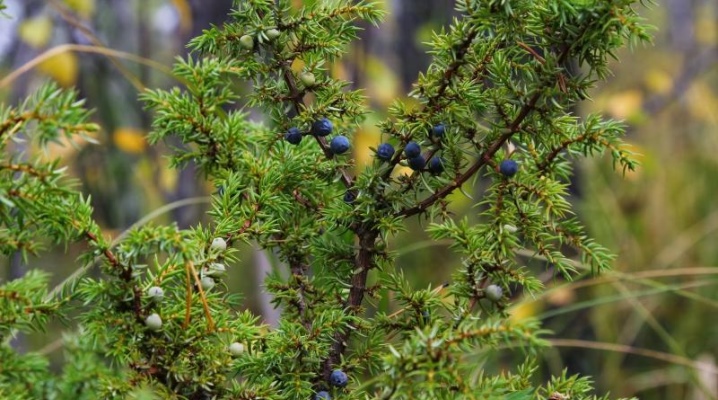
The most common type of juniper is common, which grows on many continents, including America, Asia and Africa. This group includes various plants, contrasting in appearance, and suggesting the most bizarre forms. They are successfully used for landscaping and landscape design of any site, but the culture has features that are important for growing that gardeners need to know about.


Botanical description
A plant like common juniper (Latin name Juniperus communis) is also called heres, and it belongs to the cypress family. It is known that due to its high vitality, it is able to survive in any climate and on various, even poor, rocky and sandy soils. Some species thrive in wetlands as well as on mountain slopes. In the forest, juniper grows next to coniferous and deciduous trees, sometimes forming dense thickets in swamps and forest edges. In general, the culture looks like a shrub.
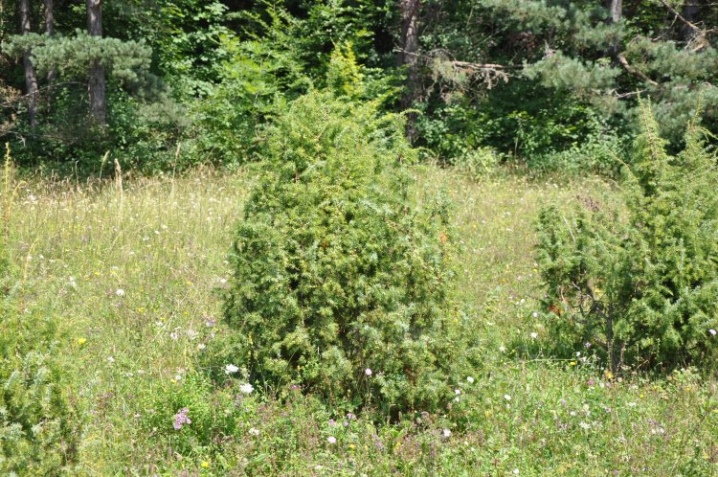
Specific characteristics of the species:
- dark brown or dark gray bark;
- the height of the juniper is from 1 to 3 meters, while some tree species reach 10-12 m;
- the shape of the aerial part in different representatives is pyramidal, round or in the form of a cone, the diameter of the crown in creeping species is much greater than the height of the bush;
- the plants of this group have lanceolate needles with a shiny surface, a light stripe and a barely noticeable groove, the length of the needles is about 1.5 cm, the width is up to 7.5 mm;
- the root system of the plant is quite deep, but little ramified, on dense clay soils it is located in the surface layer of the earth and is almost not fixed.
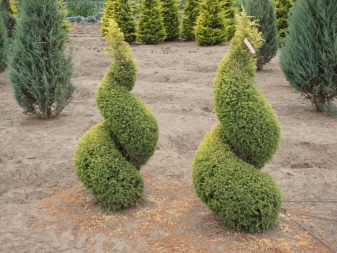
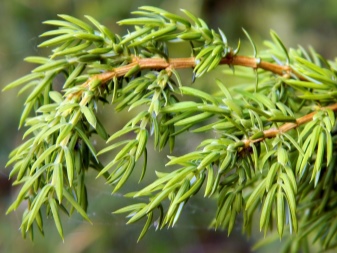
Veres is considered a dioecious plant. Its male cones are smaller and yellow in color, while the female cones include the lower and upper scales, which, after pollination in May, grow together to form a blue-black cone berry.
The fruits are edible, they are formed in the second year closer to autumn, in accordance with GF XI and GOST, they should be round, glossy, with a bluish tint and greenish pulp. Their taste is spicy, sweetish.
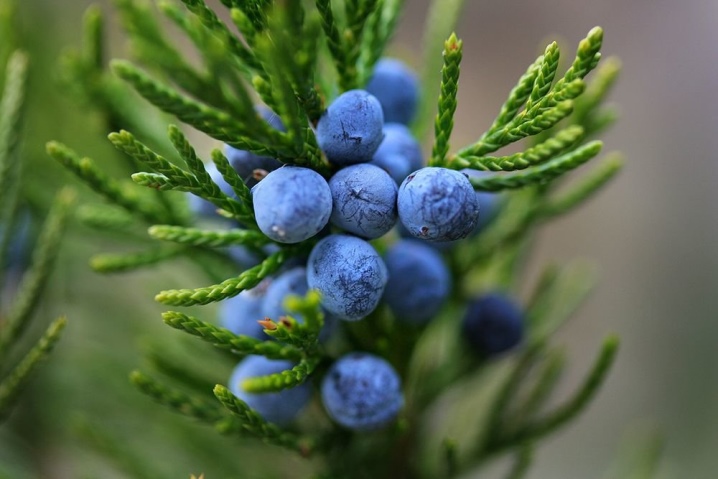
Popular varieties
Several varieties of common juniper are considered especially popular and in demand.
- "Depressa aurea" - a wide, undersized shrub with spreading branches drooping at the ends. The height of an adult bush reaches 30 cm, the plant is up to 1.2 m wide. The typical color of the branches is rich yellow.

- The variety, bred by German breeders - "Gold Con", 2-meter tree up to 60 cm wide, with branches directed obliquely upwards, turning yellow in spring.

- Sentinel - a variety with a crown in the form of a column with a pointed top, up to 1.5 meters high in adulthood, 30 cm in diameter. The shade of the needles is emerald green, this color persists in winter.

- For the German variety "Meyer" the pyramidal shape is characteristic, and the shoots, elongated upward, have horizontally spread tips, making the plant fluffy. The green color of the needles looks silvery due to the white stripes on the needles.
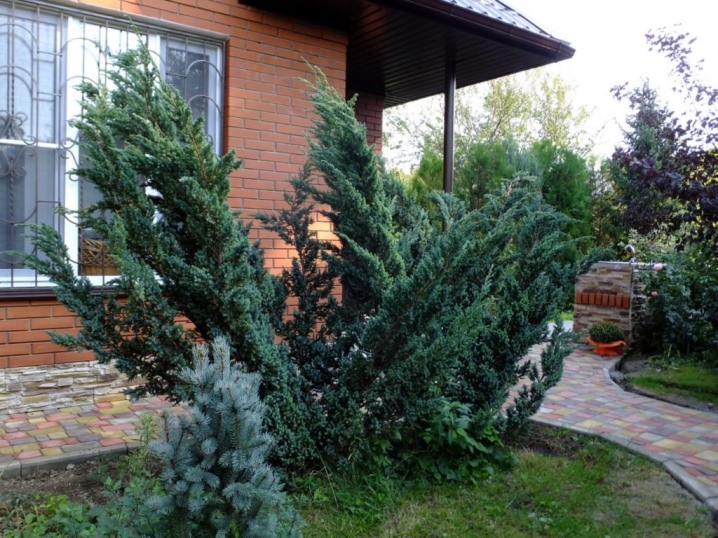
- "Compress" - dwarf columnar bush. Its height is 1.2 m. Branches with dark green needles are raised up and form a dense crown, ending with a rounded crown.
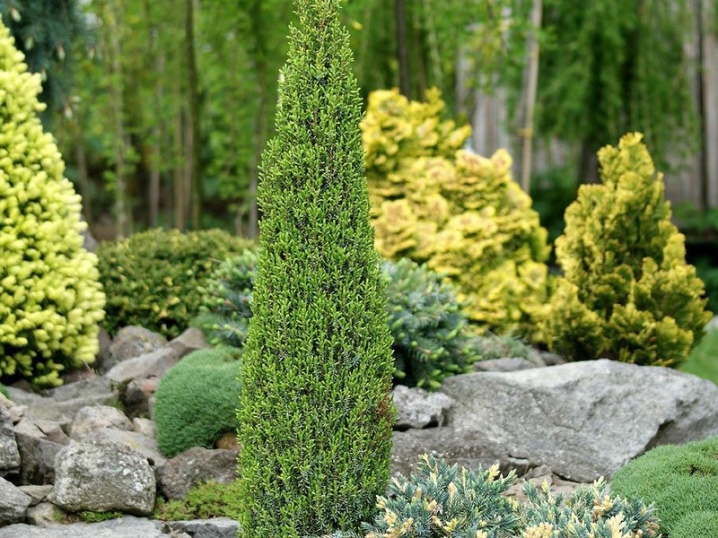
- Ephedra "Goldshatz" is a ground cover, low-growing shrub, the crown diameter of which is 150-160 cm, and the height is 40 cm. Its branches are wide and flat, growing first upwards and then to the sides. The needles are soft, deep golden in color.
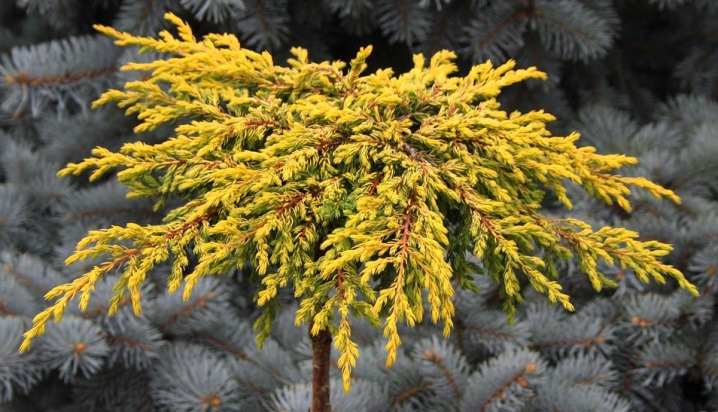
- Evergreen shrub "Suecika" has a crown up to 1.5 m wide, the variety reaches a height of 2-4 m. The needles are thorny, gray-green, branches growing vertically have hanging tips.
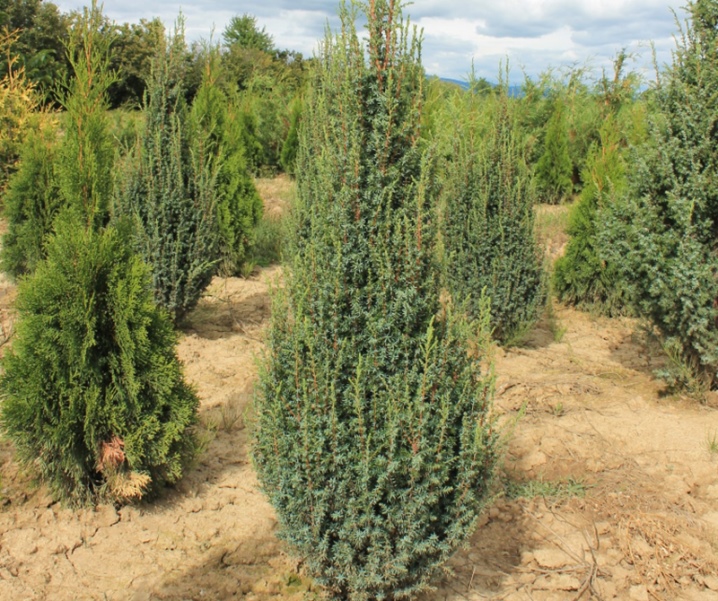
- "Oblonga pendula" - a beautiful standard plant with weeping branches. In diameter, the juniper reaches 1 m with a height of 1.5 m.With its general refined appearance, the variety is distinguished by thin thorny green needles.
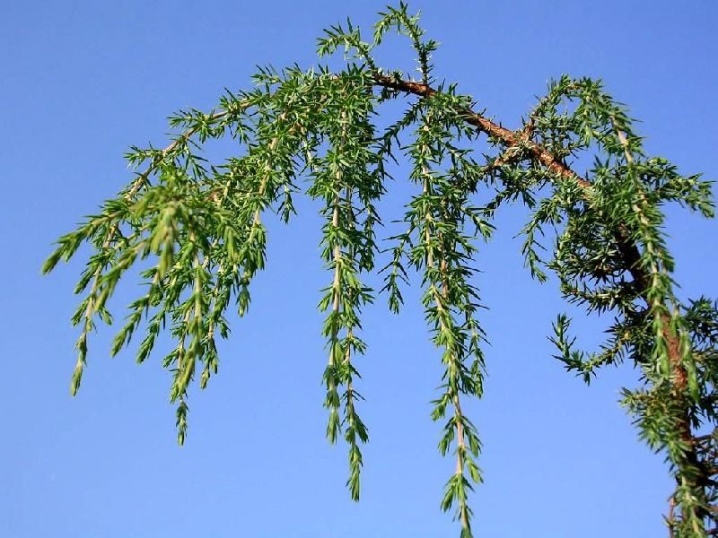
- Greenmantle - a ground cover variety with creeping shoots forming a dense dark green carpet. In width, the shrub grows 2 meters, having a height of only 20 cm.

The listed species are widely used in the design of gardens and private territories in combination with other representatives of the flora.
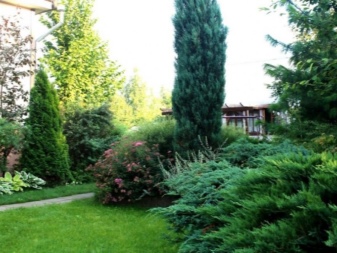
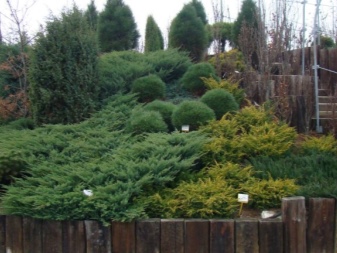
Landing
Young plants under the age of 4-5 years are most suitable for planting, which adapt faster and better in the open field. The main requirement is a closed root system.
Juniper loves light, but feels comfortable with light shade. The main thing is that the planting site is protected from the wind, the gusts of which can damage the young plant. Loose, well-drained soil is suitable for the culture; part of the fertile garden or sod land must be added to the poor soil.
The plant can be planted in open soil from April to May or in autumn, before the onset of cold weather. The planting hole is prepared 2 weeks before planting the culture.
- In size, the hole should be 2-3 times larger than the volume of the root system together with the ground. Its bottom is filled with mineral chips, broken brick, expanded clay or sand, forming a drainage layer.
- The nutrient mixture, which will subsequently fill the space, is prepared from peat, coarse sand, turf and a small amount of clay. With increased acidity, the soil is diluted with lime; dolomite flour can be used for this. Additionally, the soil mixture is fertilized with preparations containing phosphorus and nitrogen.
- The soil is watered, then kept for 2 weeks until the moisture is absorbed and the earth settles. After that, a young plant is placed in a hole, deepening so that the root collar - the place where the roots pass into the trunk - is located at the same level with the soil surface, and if an adult juniper is transplanted, it is 6-10 cm higher.
- A clod of earth on the roots of seedlings is abundantly moistened 2 hours before planting. The nutrient substrate is covered in parts, carefully filling the empty space around the root shoots. Then the soil must be tamped and watered, and at the end - mulched with chopped cones, sawdust, peat, pine nut shells or pine bark 5-7 cm thick.
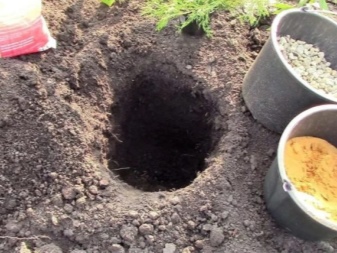

Common juniper is a fairly large crop, therefore, when planting several specimens, you need to maintain a distance of 1.5-2 m between them.
It is undesirable to dig up and replant mature trees, since during extraction the main root is damaged to one degree or another. This can cause the death of the plant. The only acceptable option is a transplant in winter with a frozen earthen coma. In practice, plants transplanted closer to spring usually have time to adapt to new conditions and take root.
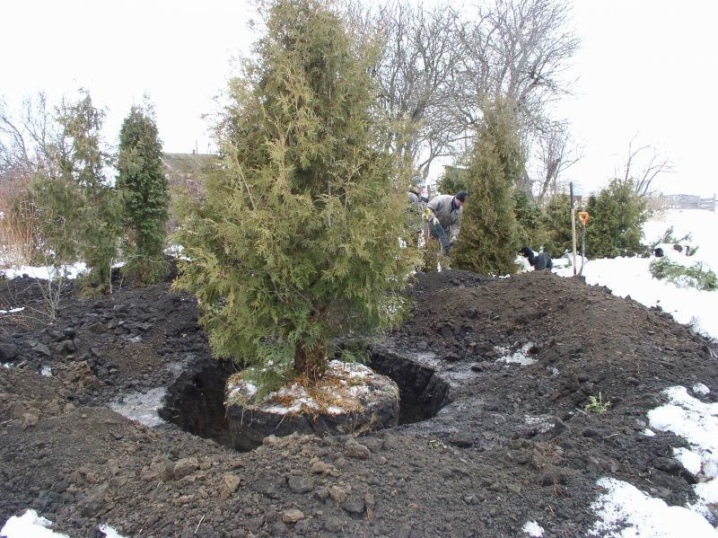
Follow-up care
This juniper variety is unpretentious, and in good lighting it grows and develops well in one place for many years. However, the cultivation of newly planted bushes is impossible without the attention and care of the gardener.
Watering
Mature plants often have enough natural moisture during precipitation, but bushes planted in the open field in spring require periodic watering. This is especially true for hot summer days. If watering an adult tree requires up to 10-20 liters of water, then a young plant needs at least 1 bucket of water in dry weather. In summer, both adult and young plants need to be sprayed every 15 days. Sprinkling with a spray is carried out in the morning or in the evening - this refreshes the crown and prevents the needles from drying out. Spraying during the day is dangerous due to the potential for sunburn.

Agricultural work directly related to irrigation is weeding, shallow loosening and mulching to maintain moisture in the near-trunk circle on the one hand, and on the other, to prevent stagnation of water.

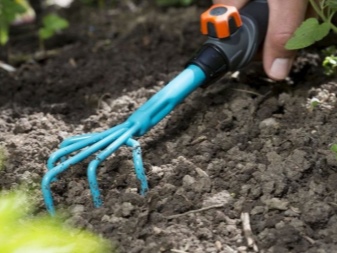
Top dressing
Already 30 days after planting, you can feed the seedlings by adding 1 sq. m about 50 g of nitroammofoska, and repeat this procedure every month without using other drugs. It will be necessary to fertilize the soil more often when it is depleted in composition. For better growth and flowering, you can use complex conifers.
In the future, top dressing is applied in the spring and summer, if there are signs of insufficient growth. If the needles turn yellow, the plant is most likely deficient in an element such as magnesium. Organic matter is needed when improper growth occurs due to deformation of the branches, but only rotted compost or manure is used, the plant may also need nitrogen. An established adult tree is fertilized once every 1-2 years, dispensing with foliar dressing for the beauty of the aboveground part.
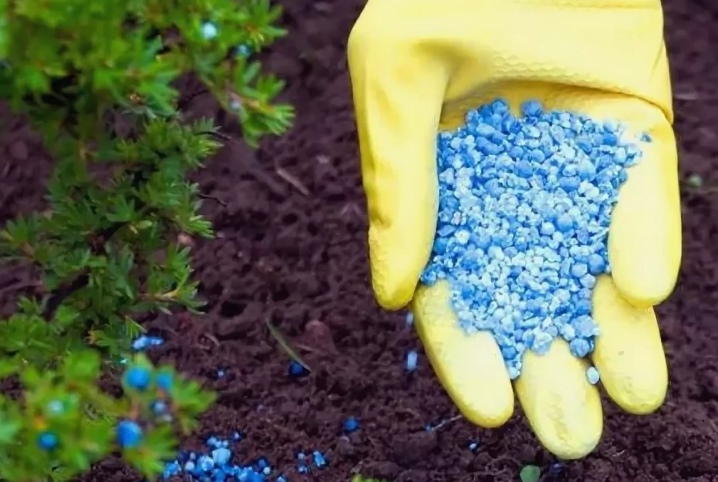
Pruning
Timely haircut helps not only maintain the attractive appearance of the juniper, but also prevents many diseases of the culture. When creating a hedge, periodic crown formation is necessary, and, as a rule, the procedure is carried out in the spring or in the first days of summer. It is important that the young branches that will grow can gain strength before the onset of cold weather.
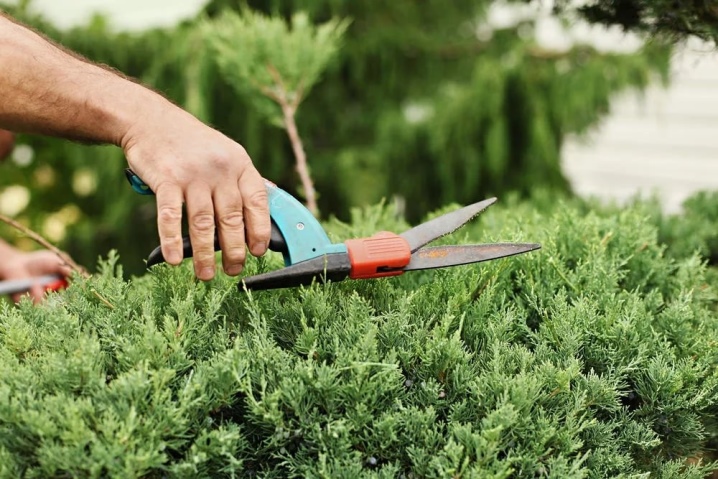
It is best to prune your juniper in early spring before it blooms. Shrub varieties can be trimmed in a cone, ball or pyramid shape, but this must be done with care. It is undesirable to cut off the branches of creeping species, as well as drooping ends.
Sanitary pruning is carried out in the fall, while removing diseased, damaged and dry shoots.
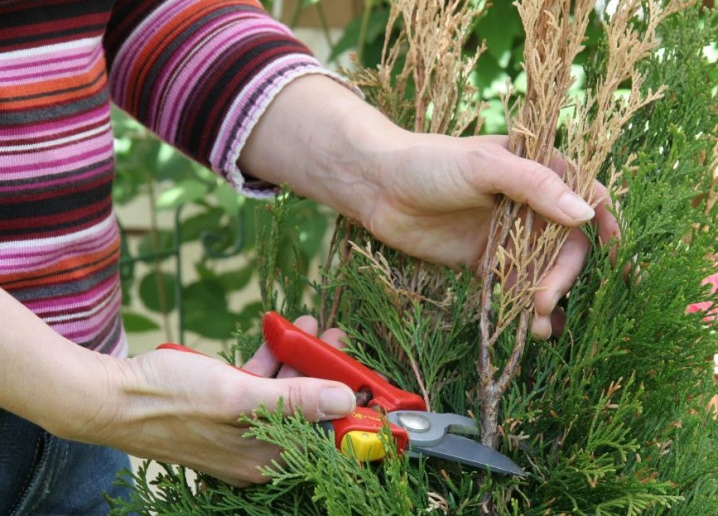
Disease and pest control
Juniper is resistant to most diseases, but due to waterlogging and stagnant water, it is susceptible to rust damage. It is a fungal disease, the signs of which are brown-orange growths that appear on the branches. Because of this, the plant gradually loses its green color, and if you do not take action, after a few years it may die completely. Treatment consists of pruning the affected branches with a sterile knife or secateurs and then spraying them with a fungicidal agent.
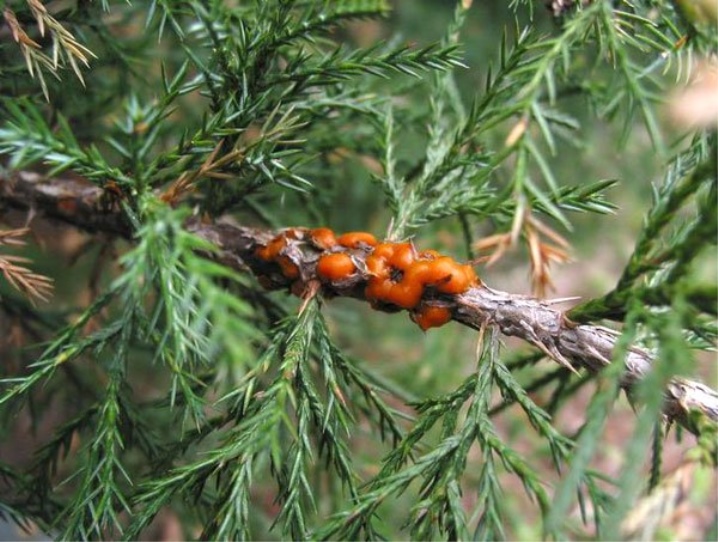
There are no less insidious diseases characteristic of this variety.
- Tracheomycosis, provoked by anamorphic, ascomycete fungi Fusarium, leading to wilting of the juniper. This is due to the fact that fungal spores settle in the root system of the plant, as a result of which it dries out. Typical symptoms are wilting of the top of the tree, individual branches, and then the entire culture. Other pathogenic fungi can also cause the shoots to dry out, so it is important to inspect the crown regularly. When gray spores and other signs appear on it, you need to do the same as in the case of rust - get rid of diseased branches and treat the plant with fungicides.

- Mealybug - another nuisance that can be encountered when growing an ordinary juniper. These parasitic insects suck the sap from the tree, leaving on its crown a bloom similar to cotton wool. You can eliminate the problem with the help of folk remedies - infusion of garlic, alcohol solution, tincture of calendula, green soap, which is a brown potassium salt of fatty acid with a soapy smell. For spraying, take 15 g of the product per 1 liter of water. Before processing, plaque must be carefully cleaned from the branches with a brush.

In addition, the juniper has many other enemies - the causative agents are various fungi and many insects - scale insects, moths, aphids, sawflies and even ants.
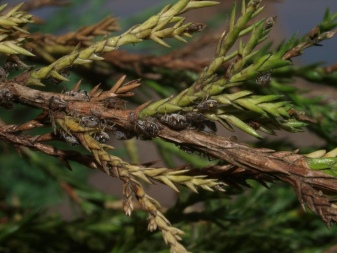
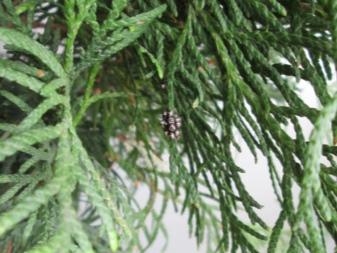
In order to prevent diseases, it is important to carry out preventive treatments in advance, to fertilize the soil under the plant in a timely manner with immunomodulators, agents containing potassium, nitrogen and phosphorus necessary for it.
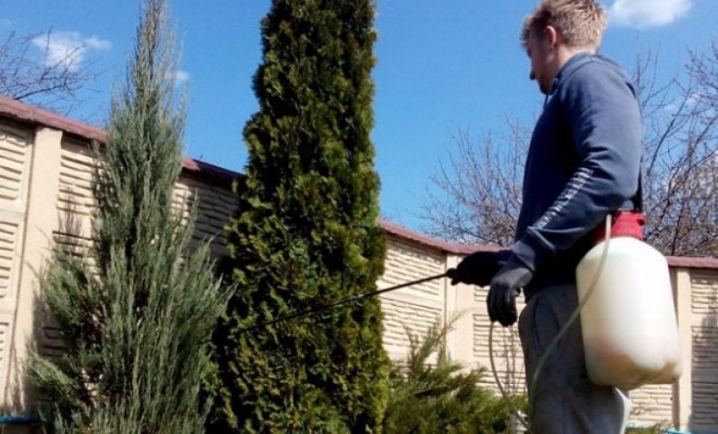
Compliance with the rules of agricultural technology and regular disinfection of garden tools with disinfectants will help to avoid problems.
Often, the cause of diseases is too acidic soil, therefore, when planting, it is important to neutralize it with slaked lime. A also experienced gardeners recommend soaking juniper roots in antibacterial and antifungal solutions of the preparations "Vitaros", "Maxim", "Fitosporin", which significantly reduce the possibility of contracting any infections.
It is equally important to take care of the plant in spring, from February to March, when the sun is particularly active, causing burns on the crown of the juniper. At this time, it is shaded with a non-woven polymer cloth, and the ground near the trunk is watered with warm water to melt the ice, which prevents the roots from absorbing water and regulating the exchange of moisture.

How to prepare for winter?
Adult bushes have sufficient resistance to low temperatures, but young plants up to 3 years old and those whose crown is constantly forming need careful preparation for the winter period, otherwise, under the weight of the snow mass, their branches may be damaged and even break. Along with this, due to frost, the juniper shoots turn brown, which means the process of withering away.
You can save a healthy bush if you tie the branches at the end of autumn after a sanitary cut and build the necessary shelter for it:
- the ground near young small bushes is mulched with needles and covered with coniferous spruce branches, and spruce and pine branches can be tied to branches, covered with deadwood, which will delay the snow mass;
- you can use a wooden frame and shield the plant from the south side - reflecting from it, the sun's rays will warm the aerial part of the juniper;
- if agrofibre or burlap is used, then the lower part is left open, and the crown is completely wrapped in cloth.
- there is an option to simply tie the branches to the trunk and, when snow falls, fill the bush with it, of course, if it is not wet and heavy, but dry and crumbly.
Juniper film is not used, as well as burlap, if the winter is expected to be warm - both materials can cause debate, wilting and dropping of needles, and lead to fungal diseases.

Reproduction
Common juniper can be propagated in several ways, but it should be noted that it is most easy to do this with the help of cuttings and cuttings. But if you want to get a plant with an ideal shape, and tolerate pruning well, you will have to use grafting. True, this method, like growing from seeds, is more time consuming. It is worth figuring out how to correctly cultivate a culture.
Seed propagation involves the collection of cones - the skin is removed from them, the seeds are extracted, which are soaked in water for a week with constant replacement. Stratification includes keeping the planting material in moist sand, a container with which is placed in the lower part of the refrigerator. In April, the seeds are treated with Epin extra and sown in greenhouses to a depth of 2 cm. The soil mixture is prepared for this from humus, leafy soil, needles and peat. As they grow, the bushes are planted, fertilized the ground, constantly ventilated the room, and moistened the soil; young plants will be ready for transplanting into open soil by three years.
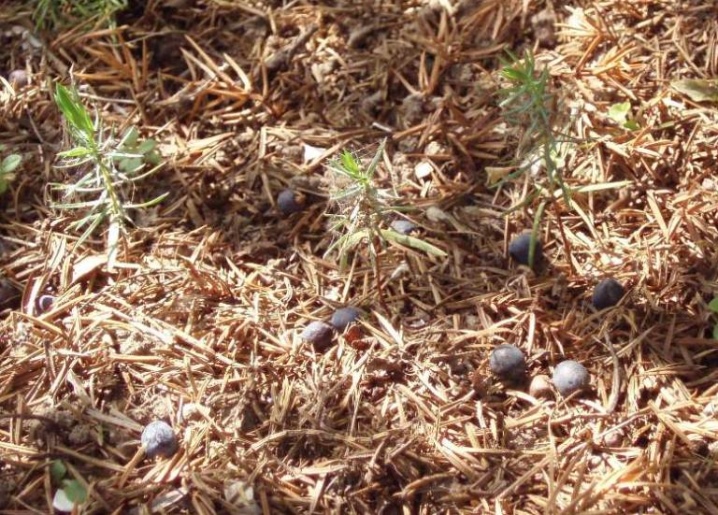
Juniper can be planted with cuttings that are cut in May or June. They are cut with pruning shears, but it is allowed to gently break them off with your hands so as not to damage the main plant, the branches of which can then dry out and die off.

It is better to carry out cuttings on a cloudy day in the absence of the sun.
The size of the cuttings is 15-20 cm; shoots are taken from miniature plants even less. Plants are planted in a substrate with the same composition as for seeds, building a greenhouse. A drainage layer must be placed on the bottom of the container, and the lower part with the "heel" is treated with a growth biostimulator, it is advisable to sprinkle it with Fundazole powder in order to exclude fungal damage.
Planting depth - 2 cm, after compaction the ground is sprinkled with peat, the greenhouse is closed. It is important to regularly ventilate the plant, moisturize as the soil dries and spray. The juniper will take root until winter, after which it is covered and planted in the spring.
Ground cover and creeping varieties are easy to propagate by layering - after the side branches are separated, the shoot is immersed in a prepared hole, covered with loose earth and fixed with wire or staples. From above, cover the layer with covering material for 15-20 days, and then remove the canvas, loosen the earth and sprinkle it with mulch. It is important to weed the emerging seedlings, remove weeds, and irrigate if necessary. They will need to be separated from the mother plant in a year, and planted in a permanent place in the garden.
To obtain a standard plant with a weeping or spherical crown, grafting is done. As a rootstock, a juniper with an even trunk, the same size as the scion, is used. The grafting consists of oblique cuts of the cutting and rootstock, which are then combined and fixed using garden pitch and polyethylene.
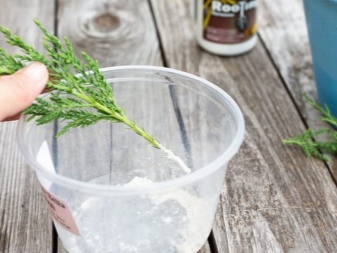

Beautiful examples in landscape design
The main purpose of different types of juniper is landscaping and the use of a decorative element in ensembles that decorate suburban areas:
- the plant is suitable for creating rocky compositions, rockeries;

- undersized varieties go well with bright perennial plants with small and medium inflorescences;

- large varieties with a geometrically correct, dark green crown can be used to create an English garden;

- in oriental compositions, any varieties of common juniper are used - they perfectly emphasize colorful details and bright flowers, and also look beautiful next to stones;

- the culture is planted along alleys, paths and stairs, lawns are framed in groups.

An unpretentious and spectacular juniper, planted with taste and skill, is able to give the garden a special aesthetic charm, become the main decoration, or it is advantageous to set off the brighter elements of the landscape composition.
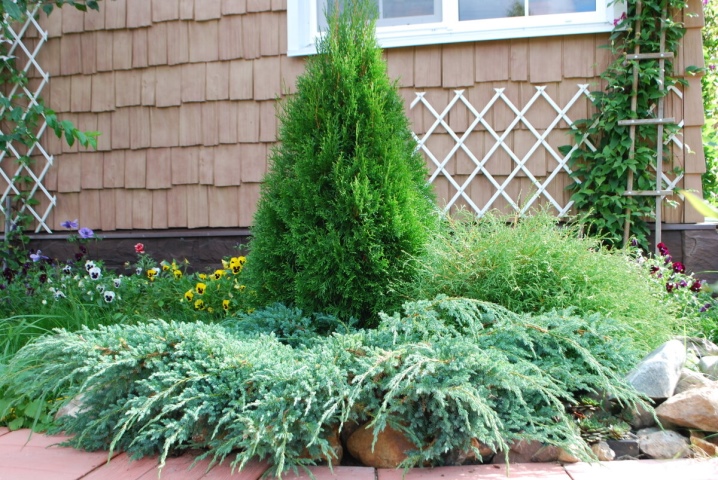
For tips on planting common juniper, see the video below.



































































The comment was sent successfully.